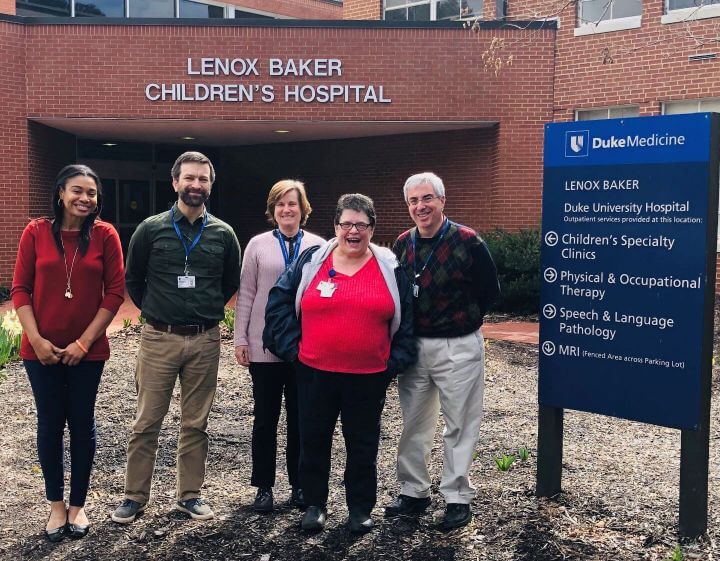The Phase 1, open-label, dose-escalation trial was designed to evaluate the safety and tolerability of AVXS-101 in patients with SMA Type 1. The key measures of efficacy were the time from birth to an event and video confirmed achievement of ability to sit unassisted. Additionally, several exploratory objective measures were assessed, including a standard motor milestone development survey and CHOP INTEND. After the 24-month follow-up, to date, 11 patients have enrolled in the Long-Term Follow-Up (LTFU) trial for ongoing evaluation.
Event-free Survival and Safety
Twenty-four months following gene transfer, 15 of 15 (100%) patients were alive and without need for permanent ventilation. The median age at last follow-up was 27.8 months and 30.7 months for patients in the Cohort 2 and low-dose cohort (Cohort 1), respectively. Natural history indicates only eight percent of untreated patients with SMA Type 1 survive event-free at 20 months of age.
AVXS-101 appeared to have a favorable safety profile and to be generally well tolerated, with no new treatment-related safety or tolerability concerns identified at the 24-month follow-up.
Treatment Durability and Motor Milestone Achievement from Long-Term Follow-Up Study
Patients in Cohort 2 continued to achieve new milestones during the LTFU trial. Two additional patients achieved the ability to sit unassisted for 30 seconds or more. Eleven of 12 (92%) patients could sit unassisted. Two additional patients achieved the ability to stand with assistance. Four of 12 (33%) could stand with assistance. Three of four patients achieving these new milestones were on AVXS-101 alone (one sitting and two standing with assistance). The oldest child from Cohort 2 at the time of last visit in the LTFU study was 46.2 months and 40.6 months post gene therapy.
Nutritional and Respiratory Support
Patients in Cohort 2 showed a reduced need for nutritional and ventilatory support and improvement in swallowing function. According to natural history, nearly all patients with SMA Type 1 require nutritional and respiratory support by 12 months of age, and most patients are not able to swallow or speak effectively. Six of seven (86%) patients in Cohort 2 that did not require feeding support before treatment continued without feeding support after treatment; seven of 10 (70%) patients that did not require BiPAP support before treatment continued without any BiPAP after treatment. Eleven of 12 (92%) patients in Cohort 2 were fed orally, and six of 12 (50%) patients were exclusively fed orally; and eleven of 12 (92%) patients were able to speak.
First Patient Dosed in Phase 3 Trial of AVXS-101 in Pre-Symptomatic SMA Types 1, 2 and 3
AveXis also announced that they have dosed the first patient in their Phase 3 SPRINT trial. SPRINT is a multi-cohort, multi-national trial expected to enroll approximately 44 pre-symptomatic patients with two, three or four copies of SMN2; and who are less than six weeks of age at the time of gene therapy. The trial is designed to evaluate appropriate clinical endpoints, including developmental milestones, survival, bulbar function and safety of a one-time intravenous infusion of AVXS-101.
Cure SMA Funds Multiple Gene Therapy Approaches
Beginning in 2010, Cure SMA made a series of grants to Nationwide Children’s Hospital (NCH) to study gene therapy, also called gene transfer. Spinal muscular atrophy (SMA) is caused by a mutation in the survival motor neuron 1 gene (SMN1). Because of this mutation, the individual does not produce enough survival motor neuron (SMN) protein.
Gene transfer may increase SMN levels by using a virus, called a vector, to deliver the SMN1 gene to affected cells. Researchers at NCH discovered that Adeno-associated virus serotype 9 (AAV9) had the unique ability to cross the blood brain barrier and the Blood-Cerebrospinal Fluid Barrier (CSF).
Currently, two approaches are being studied: an injection into a vein, known as systemic delivery, and delivery directly into the cerebrospinal spinal fluid (CSF), a process known as CSF-delivered gene therapy. CSF-delivered gene therapy has shown promise for reducing the amount of drug required for larger and older patients. This could eventually make the treatment accessible to a wider population.
In total, Cure SMA has granted $845,000 for gene therapy, including support for both the systemic program and the CSF program. Using the data generated with our funding for CSF delivery, researchers were able to secure a $4 million grant from NINDS in 2013, to develop this delivery approach for human clinical trials in SMA.



